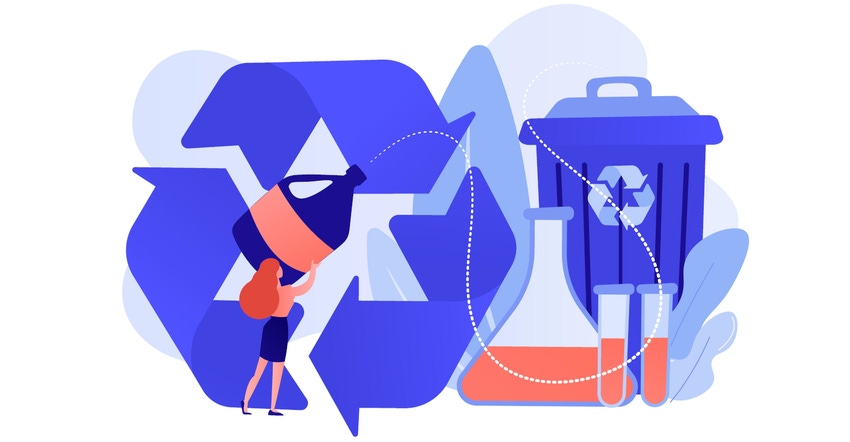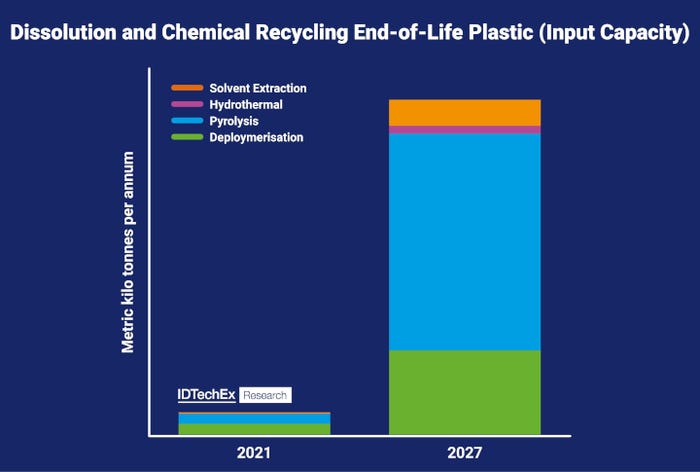What’s Happening with Chemical Recycling for Plastic Packaging?
New report identifies which technologies are likely to be best used moving forward, as sustainability in plastic packaging continues to be a hot-button issue with brands and environmentalists.

While still in its infancy, chemical recycling aka advanced recycling for plastics saw significant activity in 2022, with numerous announcements about strategic partnerships, projects, investments, and new products.
According to the new report “Chemical Recycling and Dissolution of Plastics 2023-2033” from IDTechEx, “There is a beneficial role for these processes, although perhaps overstated by many. The tailwinds are so great that significant mid-term growth is inevitable though still modest relative to the full scale of the annual plastic waste production.”
Announcements in 2022 include:
• Eastman is spending up to US$1 billion on a polyester depolymerization plant;
• Carbios has closed agreements with On, Patagonia, PUMA, and Salomon — and is reportedly working on its first industrial enzymatic depolymerization plant in partnership with Indorama;
• Encina is investing US$1.1 billion in a new pyrolysis plant;
• Plastic Energy is moving ahead to commercialize projects with TotalEnergies, INEOS, LyondellBasell, and Qenos;
• Honeywell has a strategic agreement with TotalEnergies and a joint venture with Avangard.
The four chemical or advanced recycling technologies for plastics expected to see growth in the next six years are (in order of volume, according to the report):
1. Pyrolysis.
2. Depolymerization.
3. Solvent extraction.
4. Hydrothermal.

Regulations — which have “ramped up” in the US — may temper the rate of technology development and acceptance, though. According to the IDTechEx report, the Environmental Protection Agency (EPA) has received more than 100 letters from lawmakers and environmental groups concerning how chemical recycling is regulated.
About the Author(s)
You May Also Like




